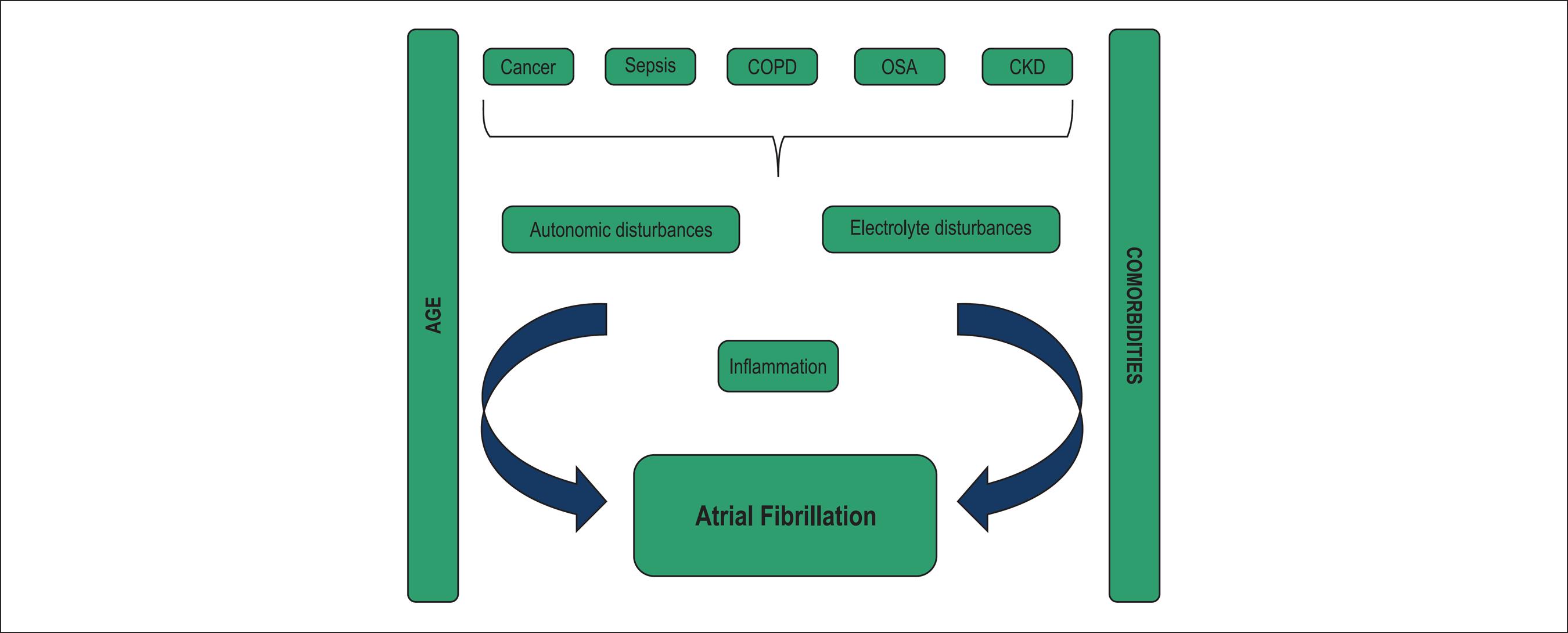Abstracts
Atrial fibrillation (AF) is the most common cardiac arrhythmia and is associated with an unfavorable prognosis, increasing the risk of stroke and death. Although traditionally associated with cardiovascular diseases, there is increasing evidence of high incidence of AF in patients with highly prevalent noncardiovascular diseases, such as cancer, sepsis, chronic obstructive pulmonary disease, obstructive sleep apnea and chronic kidney disease. Therefore, considerable number of patients has been affected by these comorbidities, leading to an increased risk of adverse outcomes.
The authors performed a systematic review of the literature aiming to better elucidate the interaction between these conditions.
Several mechanisms seem to contribute to the concomitant presence of AF and noncardiovascular diseases. Comorbidities, advanced age, autonomic dysfunction, electrolyte disturbance and inflammation are common to these conditions and may predispose to AF.
The treatment of AF in these patients represents a clinical challenge, especially in terms of antithrombotic therapy, since the scores for stratification of thromboembolic risk, such as the CHADS2 and CHA2DS2VASc scores, and the scores for hemorrhagic risk, like the HAS-BLED score have limitations when applied in these conditions.
The evidence in this area is still scarce and further investigations to elucidate aspects like epidemiology, pathogenesis, prevention and treatment of AF in noncardiovascular diseases are still needed.
Keywords
Heart Failure; Atrial Fibrillation / mortality; Arrhythmias / therapeutic use; Neoplasms

 Atrial Fibrillation and Non-cardiovascular Diseases: A Systematic Review
Atrial Fibrillation and Non-cardiovascular Diseases: A Systematic Review